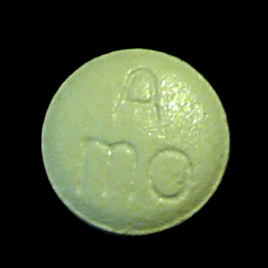Metoprolol detailed information
 | |
| Clinical data | |
|---|---|
| Pregnancy category | |
| Routes of administration | oral iv |
| ATC code | |
| Legal status | |
| Legal status |
|
| Pharmacokinetic data | |
| Bioavailability | 12% |
| Metabolism | Hepatic |
| Elimination half-life | 3-7 hours |
| Excretion | Renal |
| Identifiers | |
| |
| CAS Number | |
| PubChem CID | |
| DrugBank | |
| E number | {{#property:P628}} |
| ECHA InfoCard | {{#property:P2566}}Lua error in Module:EditAtWikidata at line 36: attempt to index field 'wikibase' (a nil value). |
| Chemical and physical data | |
| Formula | C15H25NO3 |
| Molar mass | 267.364 g/mol |
Editor-In-Chief: C. Michael Gibson, M.S., M.D. [1]
For patient information, click here
Overview
Metoprolol is a selective beta1 receptor blocker used in treatment of several diseases of the cardiovascular system, especially hypertension. It is marketed under the brand name Lopressor or Lopresor, respectively, by Novartis, and Toprol-XL (in the USA); Seleken or Selokeen (elsewhere); as Minax by Alphapharm (in Australia), Metrol by Arrow Pharmaceuticals (in Australia), as Betaloc by AstraZeneca, as Neobloc by Unipharm (in Israel) and as Corvitol by Berlin-Chemie AG. A number of generic products is available, too. The active substance metoprolol is employed either as metoprolol succinate or metoprolol tartrate (whereas 100 mg metoprolol tartrate corresponds to 95 mg metoprolol succinate), as conventional release- or prolonged-release formulation.
Physical properties
Metoprolol is very low melting. Its melting point is around 45 degrees Celsius (as determined by Differential scanning calorimetry). For this reason metoprolol is always manufactured in salt form, as drugs with melting points below 100 degrees Celsius are difficult to work with in a manufacturing environment. The free base exists as a waxy white solid, where the tartrate salt is finer crystalline material.
-
Toprol XL 50mg
Pharmacology
- Cardioselective
- Moderately Lipophilic
- Without intrinsic sympathomimetic activity (ISA)
- With weak membrane stabilizing activity
- Short half-life must be taken at least twice daily or as an Slow-release preparation.
Indications
- Essential hypertension
- Coronary heart disease (prevention of angina attacks)
- Secondary prevention after a myocardial infarction
- Treatment of heart failure.[1]
- Migraine prophylaxis
- Adjunct in treatment of hyperthyroidism
Side effects
Side effects are usually mild. Transient effects include dizziness, lightheadedness, drowsiness, tiredness, diarrhea, unusual dreams, ataxia, trouble sleeping, and vision problems. It may also reduce blood flow to the hands and feet, causing them to feel numb and cold; smoking may worsen this effect.[2]
Serious side effects that are not to be tolerated for any length of time include symptoms of a very slow heartbeat (e.g. persistent dizziness, fainting, unusual fatigue), bluish discoloration of the fingers and toes, numbness/tingling/swelling of the hands or feet, sexual dysfunction, erectile dysfunction (impotence), hair loss, mental/mood changes, trouble breathing, cough, unexplained or sudden weight gain, and increased thirst. Other highly unlikely symptoms include easy bruising or bleeding, persistent sore throat or fever, yellowing skin or eyes, stomach pain, dark urine, and persistent nausea. Symptoms of an allergic reaction include: rash, itching, swelling, severe dizziness.[2]
References
- ↑ "Effect of metoprolol CR/XL in chronic heart failure: Metoprolol CR/XL Randomised Intervention Trial in Congestive Heart Failure (MERIT-HF)". Lancet. 353 (9169): 2001–7. 1999. PMID 10376614. Unknown parameter
|month=ignored (help) - ↑ 2.0 2.1 Canadian Online Pharmacy website: Metoprolol
External links
- Pages with script errors
- Pages with citations using unsupported parameters
- Drugs with non-standard legal status
- E number from Wikidata
- ECHA InfoCard ID from Wikidata
- Chemical articles with unknown parameter in Infobox drug
- Articles without EBI source
- Chemical pages without ChemSpiderID
- Articles without KEGG source
- Articles without InChI source
- Articles without UNII source
- Articles containing unverified chemical infoboxes
- Beta blockers
- Drugs
